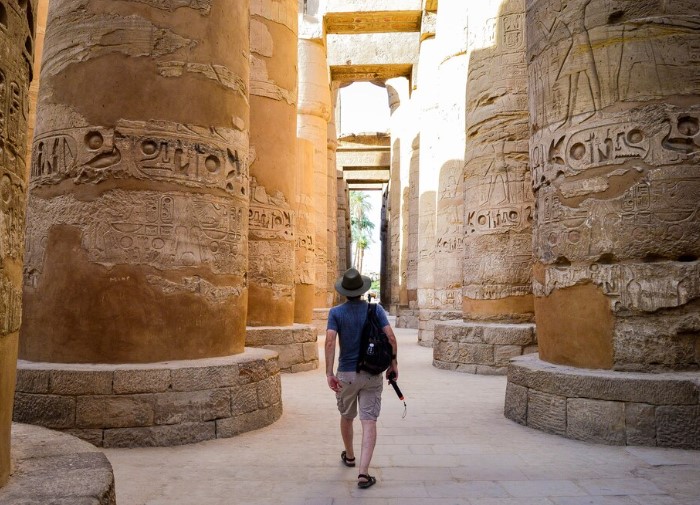
Journey To The Historic Villages Of Egypt: A Timeless Tapestry Of Culture And Heritage
When people think of Egypt, their minds often jump to the mighty pyramids, the Sphinx, or the bustling streets of Cairo. But beyond the iconic landmarks lies something just as magical and perhaps even more authentic—the historic villages of Egypt. These villages, scattered along the Nile and in the desert oases, hold stories that span thousands of years. They are living museums where ancient traditions blend seamlessly with modern life, offering travelers a unique journey through culture, heritage, and everyday Egyptian life.
Why Visit Egypt’s Historic Villages?
While the temples and pyramids are must-sees, the villages of Egypt give you something even deeper: a human connection to the land. Imagine sipping tea in a mud-brick house, walking through narrow lanes surrounded by palm trees, or watching artisans craft pottery the same way their ancestors did thousands of years ago.
Historic villages offer:
- Authentic culture – Experience life the way locals live it.
- Living history – See traditions and crafts that date back to Pharaonic and Islamic times.
- Natural beauty – From the Nile banks to the lush oases.
- Warm hospitality – Egyptians are famous for welcoming guests like family.
For travelers craving authenticity, this is where Egypt truly comes alive.
Top Historic Villages To Explore In Egypt
- Garagos Village – The Pottery Haven of Luxor
Located near Luxor, Garagos is known for its incredible pottery traditions. The craft here goes back centuries, and today you can still find artisans shaping clay into beautiful pots, bowls, and ornaments. Visiting Garagos feels like stepping into a creative time capsule, where art and history meet.
- Highlights: Watch live pottery-making, shop for handmade souvenirs, and stroll through rustic streets filled with earthy tones.
- Tunis Village – Fayoum’s Artistic Gem
Tunis Village, in the Fayoum Oasis, has become a cultural hotspot thanks to its pottery school founded in the 1980s. Surrounded by desert and the serene Lake Qarun, Tunis is now a thriving artists’ community.
- Why visit? Because it’s the perfect blend of nature, creativity, and tradition. You can try pottery workshops, eat organic farm-to-table meals, and even stay in charming eco-lodges.
- New Gourna Village – Hassan Fathy’s Architectural Masterpiece
This UNESCO-recognized village near Luxor was designed in the 1940s by the visionary architect Hassan Fathy. He blended traditional mud-brick architecture with modern community planning. Walking through New Gourna feels like stepping into a living architectural textbook.
- Highlights: Unique domed houses, courtyards, and Fathy’s philosophy of sustainable living.
- Siwa Oasis – A Timeless Desert Paradise
Although Siwa is more of a large settlement than a small village, it’s still one of Egypt’s most enchanting cultural gems. Located near the Libyan border, Siwa is famous for its unique Amazigh (Berber) culture, its ancient oracle temple, and salt lakes that shimmer under the desert sun.
- Why it’s special: Siwa has its own dialect, traditions, and cuisine. It’s truly Egypt’s hidden desert jewel.
- Nagada Village – Textiles From the Past
Nagada, near Qena, is renowned for its textile industry, especially handwoven fabrics. For centuries, the people of Nagada have passed down weaving techniques that produce colorful shawls and garments.
- Perfect for: Travelers who love fashion, textiles, and heritage shopping.
- Abydos Villages – Ancient Egypt’s Spiritual Heart
Abydos is one of the oldest cities of ancient Egypt, famous for the Temple of Seti I. But beyond the archaeological site, the surrounding villages offer a peek into rural Egyptian life. Imagine waking up in a village surrounded by ancient temples and farmlands—that’s Abydos.
- El Qasr Village – The Medieval Heart of Dakhla Oasis
In Dakhla Oasis lies El Qasr, a medieval village built with mud-brick houses and narrow alleys. It feels like time stopped here centuries ago. The old minaret, olive presses, and schools still stand as a testament to life in the Middle Ages.
- Tip: Wander around without a map—you’ll find surprises around every corner.
- Kom Ombo Villages – Life by the Nile
Kom Ombo is known for its twin temple, but its surrounding villages also showcase traditional Nile-side life. Imagine lush green fields, farmers with donkeys, and kids playing along the riverbank. It’s a slice of simple, rural beauty.
- Dahshur Villages – Beyond the Pyramids
Most travelers visit Dahshur for the Bent Pyramid and Red Pyramid, but staying in nearby villages gives you the chance to experience authentic rural hospitality. These villages combine ancient wonders with everyday Egyptian life.
- Aswan Nubian Villages – Colors of the Nile
No journey to Egypt’s villages is complete without visiting the Nubian villages of Aswan. Painted in vibrant colors, these villages sit along the Nile, with houses decorated in geometric patterns and murals. Nubian culture, language, and music add another rich layer to Egypt’s heritage.
The Cultural Treasures of Egyptian Villages
- Traditional Crafts and Handicrafts
From pottery in Garagos and Tunis to textiles in Nagada, each village specializes in something unique. These crafts aren’t just souvenirs—they are living traditions that support local economies.
- Music and Dance
Folk songs, traditional instruments like the rebab, and Nubian drumming give travelers a chance to experience the soul of Egypt through sound.
- Cuisine
Village life means farm-to-table meals. Think of dishes like feteer meshaltet (layered pastry), molokhia, and fresh dates straight from the palm tree.
- Festivals and Celebrations
Many villages host festivals tied to harvests, religious holidays, or cultural traditions. These events bring communities together and are a treat for visitors.
How To Explore Egypt’s Historic Villages
- Best Time to Visit: October to April, when the weather is cooler.
- Stay: Eco-lodges, guesthouses, or family-run homes for authentic experiences.
- Getting Around: Local minibuses, hired cars, or guided tours.
- What to Pack: Comfortable clothes, walking shoes, and respect for local customs.
SEO Tips (For Travelers & Travel Bloggers)
If you’re writing or sharing about Egypt’s villages, focus on these SEO keywords:
- Historic villages of Egypt
- Cultural heritage in Egypt
- Egyptian rural tourism
- Authentic Egyptian experiences
- Nubian villages Aswan
- Tunis Village Fayoum pottery
By blending these into your travel blogs or vlogs, you can reach readers searching for unique Egyptian travel ideas.
Final Thoughts
The historic villages of Egypt aren’t just places to visit—they are stories you step into. They offer a rare opportunity to experience the culture, heritage, and daily life of Egyptians in ways that go far beyond the pyramids and temples. Whether you’re wandering through the colorful Nubian villages in Aswan, exploring the medieval lanes of El Qasr, or watching pottery spin into life in Garagos, you’ll leave with memories that feel timeless.
So, if you’re planning your next adventure, consider adding these villages to your Egyptian itinerary. After all, sometimes the most unforgettable journeys are found not in monuments, but in the quiet beauty of everyday life.





